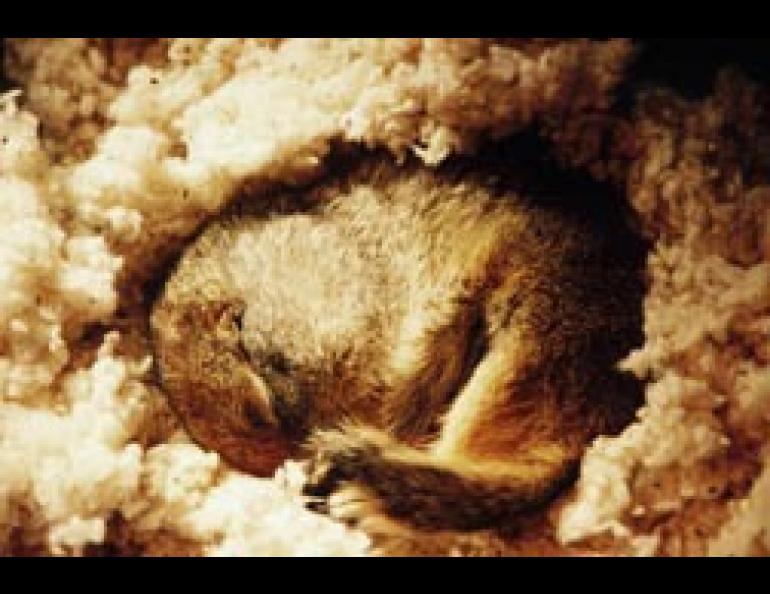
Of Ground Squirrels, Vitamin C, and Stroke
The arctic ground squirrel is a popular little creature at the University of Alaska's Institute of Arctic Biology. Brian Barnes, a professor of animal physiology, put a squirrel on the cover of the journal Science a few years back when he found hibernating squirrels' body temperatures dropped below freezing. Molecular biologist Bert Boyer recently studied a hormone within squirrels that keeps them from snacking when they should be hungry.
These days, Kelly Drew is studying an adaptation among ground squirrels that could help medical researchers develop new treatments for stroke victims. Drew is a neuroscientist--she studies the brain and nervous system--at the Institute of Arctic Biology.
Hibernating ground squirrels are a bit like humans who suffer a stroke. Strokes, also called brain attacks by folks at the American Heart Association, happen when a clot or ruptured vessel interrupts blood flow to the brain. Denied oxygen--and glucose-rich blood, cells within the brain die. Depending on what part of the brain expires, stroke victims lose control of various body functions. Stroke survivors often don't regain many of their work skills for up to seven years. Drew hopes her studies, funded by the Alaska Affiliate of the American Heart Association, will dramatically reduce recovery time.
When in the deepest stage of hibernation, ground squirrels are cold, furry balls that seem more dead than alive. Besides a body temperature that may fall below 32 degrees Fahrenheit, a squirrel may take as few as two breaths a minute, and its heart may beat just twice a minute (the normal heart rate for an active ground squirrel is about 200 beats per minute). Such a reduced trickle of blood flowing to a hibernating squirrel's brain should cause damage, but it doesn't. Drew thinks ground squirrels have several attributes that may prevent brain damage: they get very cold while hibernating, their blood doesn't clot, their white blood cells go into hiding, and--most relevant for possible human application--their blood is rich in ascorbic acid.
Ascorbic acid, better known as vitamin C, is produced in the livers of mammals other than humans (we get vitamin C from the food we eat). One of the benefits of vitamin C is that it eliminates free radicals from the bloodstream. Free radicals, molecules with unpaired electrons, are sort of like wounded bears in the alder tangle of the human cell--they attach themselves to electrons of useful molecules within a cell and destroy them. Vitamin C molecules and other "antioxidants" easily lose electrons; because of this trait, antioxidants eat free radicals before they can wreck other molecules vital for good health.
Drew found that hibernating ground squirrels' blood has four times the amount of ascorbic acid than their blood contains when they are not hibernating. When the ground squirrel stirs from the deepest stages of hibernation, the Vitamin C content of their blood quickly returns to normal. Drew wants to find out if the Vitamin-C rich blood of hibernating squirrels is actually protecting the squirrel's brains.
If she finds the connection to be valid, the ground squirrels' method of protecting their brains might be applied to humans. In people, damage from a stroke has two stages--the immediate destruction caused by the lack of blood flow, and the death of cells when blood flow resumes, a period that can last up to a week after the stroke.
A patient's recovery during that crucial seven days might be enhanced by the intravenous injection of ascorbic acid or a similar free-radical scavenger. If the method works as well as it appears to on ground squirrels, stroke patients may not suffer as much brain damage, Drew said. Their symptoms may even improve rather than decline in the first week after the stroke. If so, our species will owe another debt to the arctic ground squirrel, an animal with incredible adaptations to life in the north.





